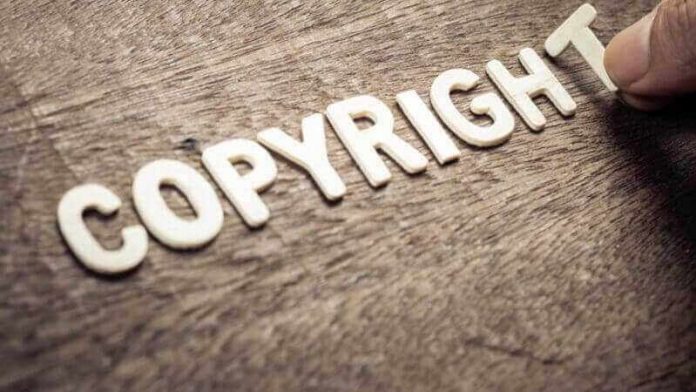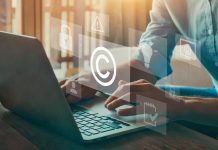This article is written by Vinay Shettigar a 3rd year LLB Student of BMS Law College, pursuing an IPR Bootcamp.
This article has been published by Sneha Mahawar.
Table of Contents
Introduction
Over the last two decades, copyright protection has been under criticism due to wide-ranging issues that question the copyright to be a helpful instrument for creative industries in their cultural and economic functions.
This article describes the current form of copyright concerns that exist in today’s society, as well as the possibility of future issues. It discusses the execution of previous amendments and how the amendments have grown through time, but it lags behind in applying legislation in the context of difficulties that remain now or may occur in the near future.
It focuses on giving essential information on what difficulties arise from the usage of the Internet in the present Digital Era, as well as a few remedies for copyright protection for a content creator or a copyright owner.
What is Copyright Law
Copyright is an intellectual property that protects original works of authorship once they are fixed in a tangible form of representation. Paintings, pictures, graphics, musical compositions, sound recordings, computer programs, novels, poetry, blog entries, movies, architectural works, plays, and much more are all examples of works.
What initiated the Copyright Law
The advent of the printing machine in Germany in the 1440s, eventually led to book copying owing to an act of the Parliament of Great Britain known as the British Legislation of Anne in 1710, which was considered the first statute to allow for copyrights.
Initially, the copyright legislation only related to book copying, but as time passed, new uses such as derivative works and translations were included in the requirements of the copyright law. Copyright now encompasses a wide range of works, including performances, paintings, pictures, computer programs, photography, movies, maps, and so on.
Later, in 1886, numerous nations adopted and signed the Berne Convention in response to the necessity for copyright protection for foreign authors. Because the United States was not a signatory to the Berne Convention, the 1952 Universal Copyright Convention was adopted and permitted to be used globally. The TRIPS Agreements, which entered into force on January 1, 1995, achieved their logical conclusion as the provisions of copyright laws grew.
The Indian Copyright Act of 1914, based on the United Kingdom Copyright Act of 1911, was passed in India in 1914 and was later superseded by the Copyright Act of 1957.
What was the ultimate goal to achieve Copyright
The goal of copyright law is to advance beneficial arts and science by safeguarding authors’ and inventors’ exclusive right to profit from their works of authorship. Modern copyright law has changed tremendously to give correct rights for authors and publishers to profit economically while keeping users’ access to information in mind.
What was the main purpose of implementing Amendments to the Copyright Act
The amendment’s principal goal is to guarantee accountability and openness. It addresses, among other things, the use of electronic and traceable payment mechanisms, royalty distribution, undistributed royalty, and yearly transparency reports by copyright organizations.
What were the key amendments that were introduced in Indian Copyright Law
The Copyright Act of 1957 has been revised five times thus far. The 1984 Amendment includes specific guidelines and processes to combat the growing problem of video piracy. It extended the infringing possibilities and revised the phrasing in Section 2. (f).
Amending legislation was passed in 1992 to tighten copyright protection, in which the duration was expanded from 50 to 60 years.
The 1944 Amendment changed the performance rights groups under the previous Section 33 provisions and was intended to implant copyright societies.
The 1999 Amendment protected performances that took place outside of India, as well as broadcasting firms and performers in that foreign country.
Later, the 2012 Amendment to the Copyright Act 1957 made several changes to modernize technology and its use, such as applying a compulsory license to foreign works and nearly doubling the term of copyright for photographs, which was extended from sixty years from publication to sixty years from the photographer’s death, among other provisions.
Later, in 2013, the Copyright Amendment Regulations were published, which were followed by the Copyright Regulations in 2016, and new rules were amended in April 2021.
The 2012 Amendment to the Copyright Act of 1957 was the most recent. Since then, there have been discussions about adding improvements to match changes in today’s current technology needs and their application.
What are the difficulties with today’s copyright laws, and what is necessary to address them
Non-Fungible Token (NFT) and copyrights
What are NFTs
NFTs are digital assets that may be traded using blockchain technology. To have a deeper understanding, NFTs are digital representations of real-world objects such as paintings, stamps, and so on. NFTs are thought to be an innovative technique to commercialize intellectual property. It is necessary to confirm that the holder owns the digital item. The NFT License terms govern how the owner of the copyrighted work may use it.
What is the problem with NFT rights
Individuals may infringe the creator’s moral rights when they mint an NFT in the public domain. The individual can readily imitate the work’s owner. Due to the anonymous aspect of the digital asset, it is difficult to authenticate the owner. When the creator’s work is counterfeited by uploading it to blockchain sites, it becomes difficult to pursue copyrights against the buyer since the buyer’s identity is unknown.
Opinion
Because NFTs are an uncontrolled sector, it is impossible to oversee them because nations have yet to adopt bitcoin. The lack of legislation makes it difficult for the author of the digital item to seek redress under copyright law. Because of its popularity, it has become critical to examine and comprehend the issues and minimize them using a legal structure of copyright act requirements.
Digital Millennium Copyright Act (DMCA) and Live Streaming Platforms
What is DMCA and the meaning of live streaming platforms
The DMCA is a component of US copyright law that oversees online content and covers the rights and duties of owners of copyrighted material. It also concerns ISPs’ (Internet Service Providers’) rights and duties on servers or networks hosting infringing material.
A live streaming platform allows you to watch, create, and share videos in real-time using simply an internet-enabled device and an internet connection through an application. Since the coronavirus epidemic, live streaming sites such as Twitch, Youtube Gaming, and Facebook Gaming have grown in popularity and viewership. Copyright infringement problems have grown in tandem with the fast growth of such platforms.
Issues with live streaming platforms
Many organizations that own copyrights have complained that these platforms do not undertake adequate diligence in preserving their copyrights. The exception of the “fair use” doctrine and the Digital Millennium Copyright Act (DMCA) are contested heavily as the DMCA aims to prevent unauthorized access and copying of copyrighted works for which authorization from the copyright owner is required.
The DMCA’s sanctions are substantial, and according to a public statement released by Twitch, the number of copyright claims has surged by 1900% in 2020. As a result, such systems rely on automation to detect any copyright claims, however determining fair usage is challenging owing to the lack of precision.
Modifications to the DMCA have been proposed that would increase the legal liability and consequences of copyright infringement on streaming platforms. This isn’t helpful since it imposes further limits on streaming services.
Opinion
There shall be clear criteria in terms of fair use, which will encompass both older and current usage. providing platforms with clear instructions on how to avoid privacy and copyright infringement will assist to keep the media platform business flourishing.
Protection of Direct Rights Management (DRM) Technologies
What is DRM
The use of technology to regulate and manage access to copyrighted material in digital content. It assists in transferring control of the copyright owner’s work from the person who owns it to a computer program.
What are the issues relating to DRM Technologies and its use
The copyright owner gains benefits from digital media, yet those benefits may be readily replicated and transmitted in digital works, increasing piracy and the uncontrolled proliferation of copyrighted works. Digital Rights Management is used to protect privacy and other illicit activity. Many nations, including the United States, the European Union, and the WIPO Copyright Treaty, have introduced Digital Rights Management as a section in copyright laws. The WIPO Copyright Treaty requires copyright owners to have acceptable technological measures to get legal protection.
However, India has failed to alter its laws to include such requirements, citing several issues with DRM technology, including danger to fair use, prohibitions on scientific research, free expression, free speech, competition, and innovation.
Opinion
DRM systems are becoming more powerful every day to combat piracy and foster the advancement of beneficial arts. If a robust DRM is in place, copyright owners and content producers will be motivated to do more business on the internet and benefit from the enormous reach that the digital world provides.
As a result, enacting necessary regulations against circumvention of the DRM system, rather than putting a stop to content creation, stimulates it by enacting strong laws that protect both developed and poor nations.
Status of Artificial Intelligence (AI) Authorship
What is Artificial Intelligence
Artificial Intelligence is a subset of machine learning that applies to computers that have been taught to demonstrate human mind features like learning and problem-solving.
Overview of recent judgments about copyrights in Artificial Intelligence
The Indian Copyright Office recently recognized AI as a co-author for a painting made by RAGHAV, an AI painting app that used the “Starry Night” painting by Vincent Van Gogh and a photograph clicked by Mr. Shahni to create a painting that was contended as copyright infringement, according to Mr. Sahni’s submissions. The authorities, however, later delivered a withdrawal notice to the human co-author.
As a result of the recent parliamentary report on artificial intelligence, which argues that AI and its applications in India would create money, special rights should be granted to AI companies, and the legal position of AI has altered. The current Copyright Act does not allow for ownership by artificial intelligence.
In Canada, RAGHAV was recently acknowledged as a co-author. However, other nations, such as China in Shenzhen Tencent v. Shanghai Yingxun, granted title or authorship to the owner or inventor of the AI program/tool for the literary works made by it.
The issue regarding the copyright of Artificial Intelligence
The issue is the inability to sue or be sued by AI, which prevents copyright protection from being preserved. There is a significant risk that humans may blame AI for copyright infringement and free themselves of any obligation, whether criminal or civil, implying a lack of human control. AI cannot be sued for injunctions, compensation, or damages because it is only a machine with no assets.
Furthermore, the fact that a copyrighted work is protected for sixty years from the death of the owner of that copyrighted work is inconsistent if AI is afforded such protection because AI would continue to update yet never die.
Opinion
It is proposed that AI’s efforts be acknowledged as having contributed to the development of content. Only the human behind the AI tool used to create such work will be acknowledged as the creator and owner of the copyright.
This process to change laws completely is avoided in such cases and thereby India shall make progress to grant recognition to AI as later if the AI gains popularity there will be a need for constant change of law regarding AI which is not a proper solution.
Conclusion
The technical advancements discussed in this article are likely to continue, necessitating more frequent revisions to the copyright. Policymakers must understand the complexities of content moderation and the manner in which material is provided in the modern world, as copyright concerns continue to increase and modify technology. It makes it difficult for copyright owners to achieve a return on investment, therefore taking the correct steps toward digital preservation initiatives while resolving copyright challenges is critical. There will be procedures established to encourage harmony between users and right holders, and it will be fascinating to see how different nations approach creating a balance in copyright protection for contemporary challenges.
References
- Historical Development Of Law Of Copyright | IIPRD Blog – Intellectual Property Discussions (wordpress.com)
- GENERAL OVERVIEW OF INTELLECTUAL PROPERTY (egyankosh.ac.in)
- https://copyright.gov.in/documents/copyrightrules1957.pdf
- Emerging trends in digital copyrights in the new age of NFTs (manupatra.com)
- The Growing Tensions Between Digital Media Platforms and Copyright Enforcement – AAF (americanactionforum.org)
- Music-Related Copyright Claims and Twitch | Twitch Blog
- Anti-Circumvention laws to protect Digital Rights – BananaIP Counsels
- THE RAGHAV ISSUE: SHOULD AI BE GRANTED AUTHORSHIP RIGHTS? – American University Intellectual Property Brief (ipbrief.net)
Students of Lawsikho courses regularly produce writing assignments and work on practical exercises as a part of their coursework and develop themselves in real-life practical skills.
LawSikho has created a telegram group for exchanging legal knowledge, referrals, and various opportunities. You can click on this link and join:
Follow us on Instagram and subscribe to our YouTube channel for more amazing legal content.
 Serato DJ Crack 2025Serato DJ PRO Crack
Serato DJ Crack 2025Serato DJ PRO Crack











 Allow notifications
Allow notifications



